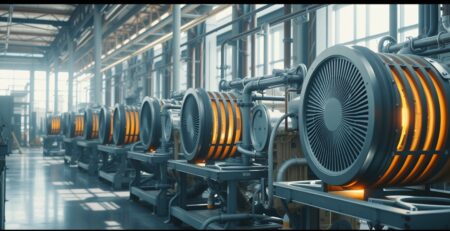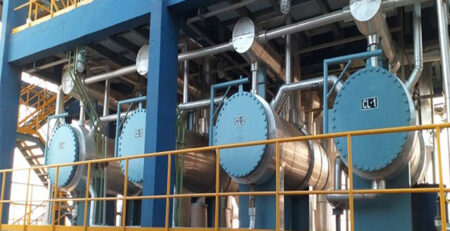Storm Water Recycling Plant
Storm water recycling is an essential environmental practice that involves the collection, treatment, and reuse of rainwater that runs off surfaces like roofs, roads, and other impervious areas. This practice not only reduces the burden on natural water resources but also minimizes flooding, erosion, and pollution in urban areas. The treatment process typically involves several stages to ensure that the recycled water is safe and suitable for reuse in non-potable applications such as irrigation, industrial processes, or even toilet flushing. Key processes in storm water recycling include sand filtration, carbon filtration, chlorination, de-chlorination, ultrafiltration, and ultraviolet (UV) treatment.
1. Sand Filtration
After sand filtration, the water undergoes carbon filtration, a process where activated carbon is used to remove organic compounds, chlorine, and other chemicals that may affect the taste, odor, or color of the water. Activated carbon has a large surface area with numerous pores that adsorb impurities, making it an effective medium for purifying water. This step is particularly important for removing dissolved organic matter, which could otherwise interfere with subsequent treatment stages.
2. Carbon Filtration
After sand filtration, the water undergoes carbon filtration, a process where activated carbon is used to remove organic compounds, chlorine, and other chemicals that may affect the taste, odor, or color of the water. Activated carbon has a large surface area with numerous pores that adsorb impurities, making it an effective medium for purifying water. This step is particularly important for removing dissolved organic matter, which could otherwise interfere with subsequent treatment stages.

3. Chlorination and De-chlorination
Chlorination is a chemical disinfection process where chlorine or chlorine compounds are added to the water to kill harmful pathogens, including bacteria, viruses, and protozoa. Chlorination is widely used because it is effective, relatively inexpensive, and provides residual protection against recontamination. However, excessive chlorine can be harmful and may lead to the formation of disinfection by-products (DBPs) like trihalomethanes (THMs), which are potentially carcinogenic. To mitigate this risk, de-chlorination is performed after chlorination to remove any excess chlorine. This is usually done by adding chemicals like sodium bisulfite or sulfur dioxide, which neutralize the chlorine.

4. Ultrafiltration
Ultrafiltration (UF) is a critical stage in storm water recycling that provides a high level of purification by removing suspended solids, bacteria, viruses, and other microorganisms. Ultrafiltration is a membrane filtration process where water is forced through a semipermeable membrane with pores typically ranging from 0.01 to 0.1 microns. This pore size is small enough to retain particles, bacteria, and some viruses while allowing water and dissolved ions to pass through.
One of the key advantages of ultrafiltration is its ability to remove a wide range of contaminants without the need for chemical additives. This makes UF a more environmentally friendly option compared to processes that rely on chemical treatments. The membranes used in ultrafiltration are often made of materials like polysulfone, polyvinylidene fluoride (PVDF), or cellulose acetate, chosen for their durability, resistance to fouling, and ability to handle high-pressure operation.
In a storm water recycling system, ultrafiltration typically follows sand and carbon filtration, which remove larger particles and organic matter, thus reducing the load on the UF membranes. The water is pressurized and passed through the UF membranes, where the contaminants are trapped on the surface or within the pores of the membrane. The filtered water, now free of microorganisms and suspended solids, continues to the next treatment stages.

Ultrafiltration offers several benefits, including high water recovery rates, consistent water quality, and the ability to operate at lower pressures compared to other membrane processes like reverse osmosis. It is also relatively easy to scale up or down depending on the treatment capacity required, making it a versatile solution for both small and large-scale storm water recycling systems.
However, ultrafiltration membranes are susceptible to fouling, where particles, organic matter, or microorganisms accumulate on the membrane surface, reducing its efficiency. Regular cleaning and maintenance of the membranes are necessary to prevent fouling and extend the lifespan of the membranes. This can be done through backwashing, where water is forced through the membrane in the reverse direction, or through chemical cleaning, where specific chemicals are used to dissolve or dislodge the fouling materials.
Overall, ultrafiltration is a highly effective and reliable process in storm water recycling, providing a robust barrier against a wide range of contaminants and ensuring that the recycled water meets the required quality standards for its intended use.
5. Ultraviolet (UV) Treatment
The final stage in storm water recycling is often ultraviolet (UV) treatment, a physical disinfection process that uses UV light to inactivate or destroy any remaining microorganisms, including bacteria, viruses, and protozoa. UV treatment is highly effective because it directly damages the DNA or RNA of the microorganisms, preventing them from reproducing and causing harm. Unlike chemical disinfectants, UV does not introduce any harmful by-products into the water, making it a clean and safe method for final disinfection.
FAQs
- What is storm water recycling?
Storm water recycling involves collecting and treating rainwater runoff from surfaces like roofs, roads, and parking lots, then reusing it for non-potable purposes such as irrigation, industrial processes, and toilet flushing. The process helps conserve water, reduce pollution, and mitigate flooding. - Why is storm water recycling important?
Storm water recycling is crucial for reducing the demand on freshwater resources, preventing water pollution, managing storm water runoff, and reducing the risk of urban flooding. It also supports sustainable water management practices in urban areas. - What are the main processes involved in storm water recycling?
The main processes in storm water recycling include sand filtration, carbon filtration, chlorination, de-chlorination, ultrafiltration, and ultraviolet (UV) treatment. Each process plays a role in removing different types of contaminants and ensuring the water is safe for reuse. - How does sand filtration work in storm water recycling?
Sand filtration removes suspended solids and sediments from storm water by passing it through layers of sand. The sand traps particles, allowing cleaner water to pass through. This step is essential to prevent clogging in subsequent treatment stages. - What is the role of carbon filtration in storm water recycling?
Carbon filtration uses activated carbon to remove organic compounds, chlorine, and other chemicals from storm water. It improves the water’s taste, odor, and color by adsorbing impurities onto the surface of the activated carbon. - Why is chlorination used in storm water recycling?
Chlorination is used to disinfect storm water by killing harmful pathogens like bacteria, viruses, and protozoa. It ensures the recycled water is safe for non-potable uses. Chlorination is effective and provides residual protection against recontamination. - What is de-chlorination, and why is it necessary?
De-chlorination is the process of removing excess chlorine from water after chlorination to prevent harmful effects and reduce the formation of disinfection by-products (DBPs). Chemicals like sodium bisulfite or sulfur dioxide are often used to neutralize the chlorine. - What is ultrafiltration, and how does it work?
Ultrafiltration is a membrane filtration process that removes suspended solids, bacteria, and some viruses from water by forcing it through a semipermeable membrane with small pores (0.01 to 0.1 microns). It provides a high level of purification without the need for chemicals. - What are the advantages of using ultrafiltration in storm water recycling?
Ultrafiltration offers several advantages, including high water recovery rates, consistent water quality, and the ability to remove a wide range of contaminants. It operates at lower pressures than processes like reverse osmosis and is environmentally friendly because it doesn’t require chemical additives. - How does UV treatment contribute to storm water recycling?
UV treatment is the final disinfection step in storm water recycling, using ultraviolet light to inactivate or destroy any remaining microorganisms. It is a clean, chemical-free method that ensures the recycled water is safe for its intended use. - What are the challenges associated with storm water recycling?
Challenges include the initial cost of setting up treatment infrastructure, maintenance of filtration systems (e.g., preventing fouling in ultrafiltration membranes), managing contaminants specific to urban runoff, and ensuring compliance with water quality standards. - Can recycled storm water be used for drinking?
Recycled storm water is typically used for non-potable purposes like irrigation, industrial uses, or toilet flushing. While it can be treated to drinking water standards, this requires additional treatment steps and rigorous testing to ensure safety. - How does storm water recycling benefit urban areas?
In urban areas, storm water recycling reduces the strain on municipal water supplies, mitigates the effects of storm water runoff (like flooding and pollution), and contributes to more sustainable water management. It also helps cities adapt to changing climate conditions. - What is the environmental impact of storm water recycling?
Storm water recycling has a positive environmental impact by reducing pollution in natural water bodies, conserving freshwater resources, and decreasing the energy needed for water treatment. It also helps maintain ecological balance by controlling the volume and quality of storm water runoff.









